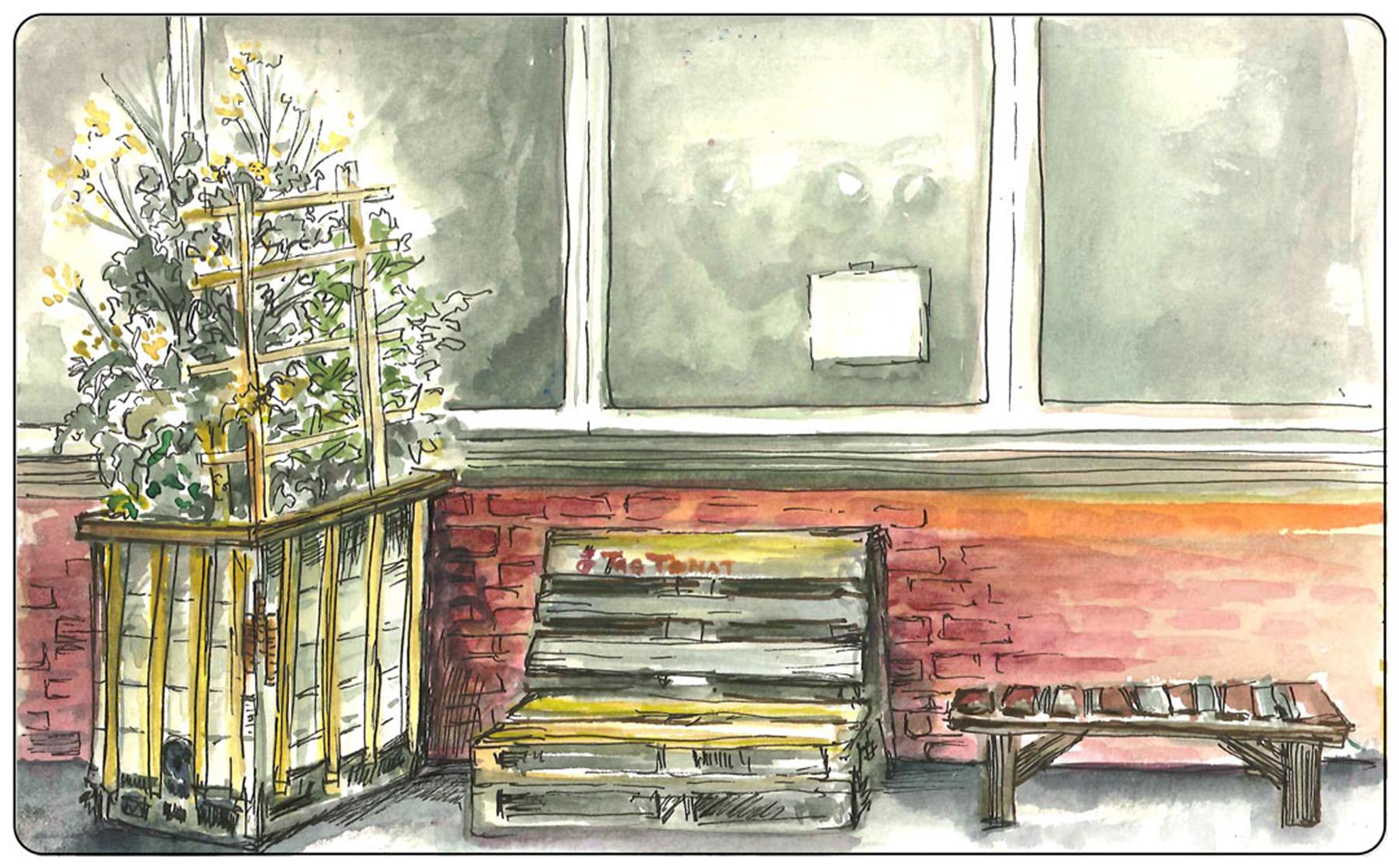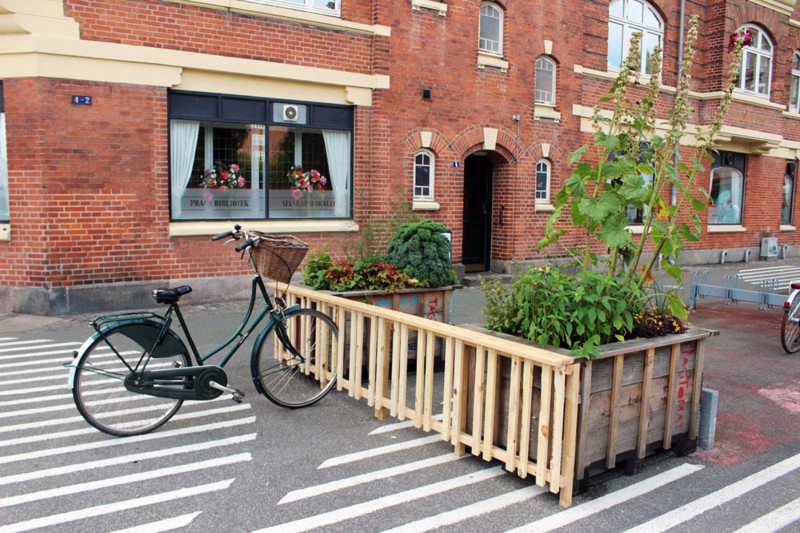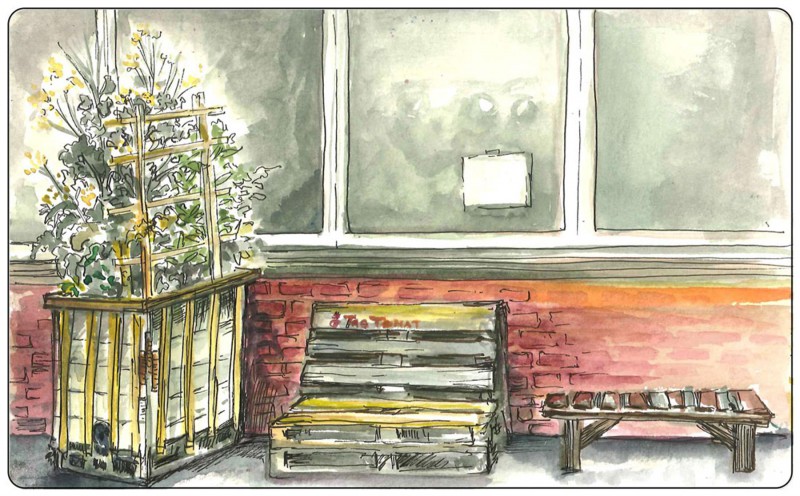By: Jennie Li, Masters Candidate, University of Washington, Landscape Architecture and Urban Planning
As a Master’s student in my third year of studying Urban Planning and Landscape Architecture at the University of Washington in Seattle, my experiences with TagTomat as well as visiting several projects during a 3 month tour last summer has been invaluable in thinking about the ways we can collectively transform small urban spaces to become productive and communal. While I’ve attempted to document my experience in various ways (through my blog and a watercolor journal https://urbanaggregate.wordpress.com/2015/09/28/alternative-foodscapes-in-scandinavia-a-journey-through-watercolor/), Mads suggested I write a post summarizing some broader observations from my journeys as an American observer.
An admittedly self-selecting but common theme throughout my experience working with different urban agricultural initiatives in Scandinavia was a desire to move towards communal endeavors – that people were craving local interaction with nature and with each other in ways that global urban consumption did not fulfill. Although these interactions were addressed differently per project, the following is an attempt to categorize and discuss some general strategies used across the sites I visited.
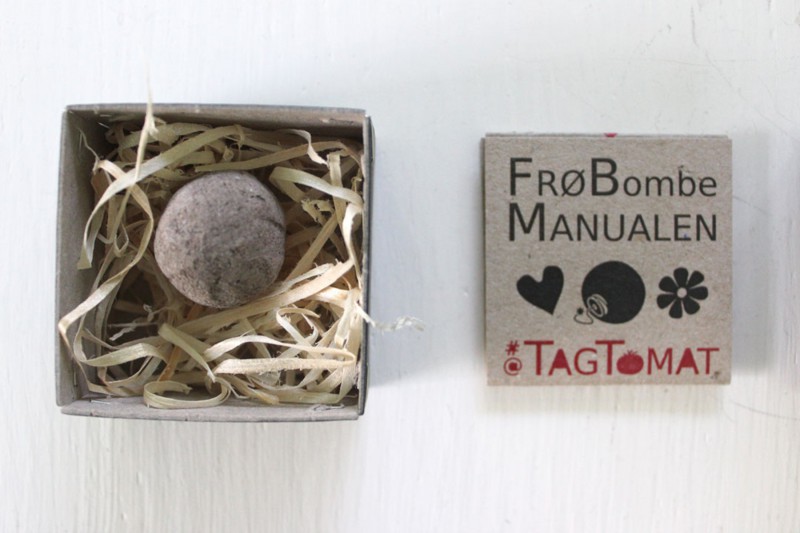
Flower/seed bombs are a portable strategy for citizens to engage with their environment. In addition to selling and producing Flower Bombs, TagTomat holds open workshops at community events to show you how to create your own.
1. Empowering people in urban communities: breaking down social barriers can serve the dual purpose of improving community life for citizens and the environment. TagTomat grapples with this concept by asking how can we create products and tools that allow people to engage? How do we adapt to urban needs through design and community engagement? Read more about my initial impressions and experiences with TagTomat here https://urbanaggregate.wordpress.com/2015/07/24/tagtomat-empowering-diy-green-communities/
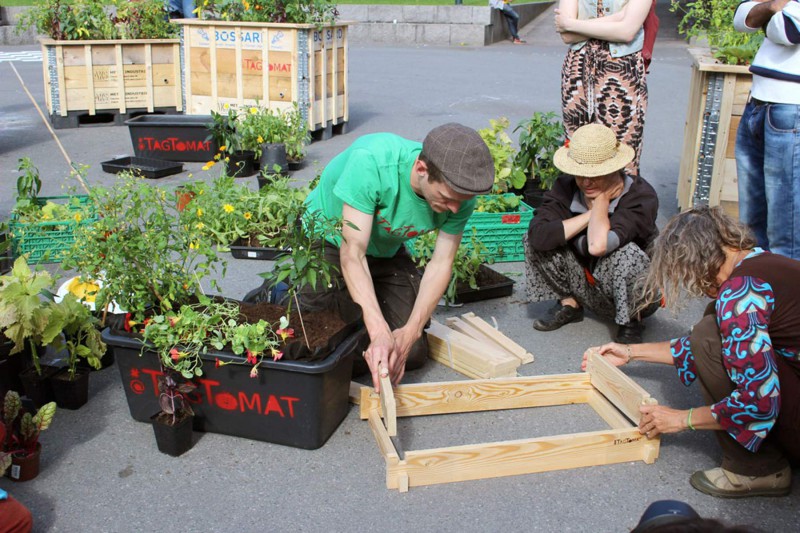
Participants help put together planters at a demonstration workshop given by TagTomat in Oslo in the beginning of august 2015
2. Visibility, especially in today’s digital world is key. Marketing (either digital or spatial dissemination of information) is what drives the story of a space and makes it a place. Visibility can also mean social networking and community workshops, which TagTomat often employs as a strategy for exposure to new communities.
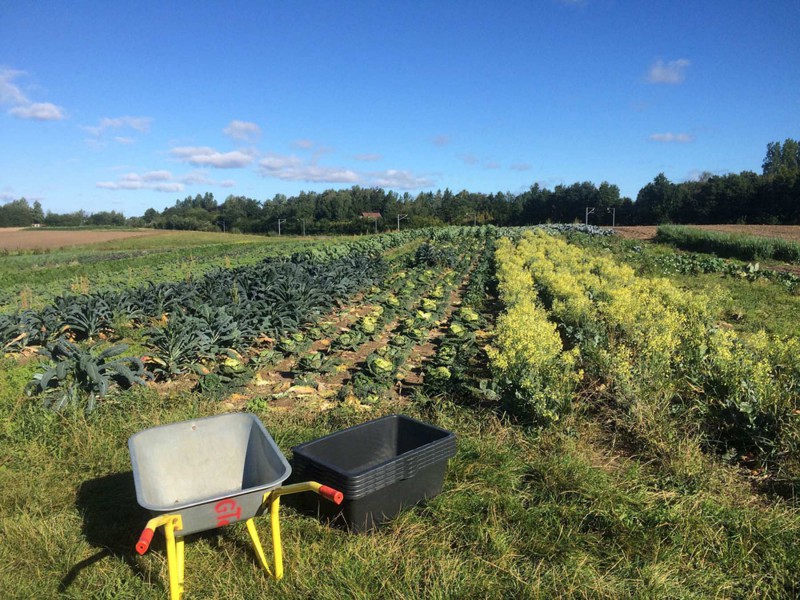
TagTomat buys and digs out some fully grown vegetables from Grantoftegaard just outside of Copenhagen.
3. Hand in hand with visibility, making connections (or networking) is at the heart of success in building community. Chaining together multiple efforts and building complexity into space has a coalesced effect of drawing people together. One specific partnership I saw as exceptionally valuable is the link between peri urban and urban spaces. In addition to the partnership between Seerupgaard and Ostergro (explored in a part article here), I visited a peri-urban farm run by a former Copenhagen chef who strove to bring the experience of dining closer to its source. Even during my final week at TagTomat, we visited Grantoftegard, an organic farm to dig out vegetables at peak harvest for an installation in Copenhagen.
In summation, urban agriculture is a sophisticated but tangible tool by which to introduce complexity back into sterile systems. Urban space does not and should not be single use sites, and spaces that are more successful are able to layer multiple uses. This can be done in numerous ways, as simple as converting a shed roof to an edible garden, to holding a seed bomb workshop at a temporary parklet for Parking Day, even building planters and seating for a community plaza. It is, in fact, the ability for urban agriculture to fulfill multiple, complex roles socially and environmentally that gives it its urbanity. As Mads is fond of saying “It’s not rocket science, but it works.”
Special thanks to Mads, for whom without his hasty and prompt correspondence I would not have been able to fulfill my scholarship application. Additionally, this journey would also not have been possible without the generosity of the Valle Scholarship, and the many wonderful people I’ve met along the way who have graciously hosted and taken me on tours of projects in/around Copenhagen, Oslo, and Stockholm.
Best,
Jennie Li

